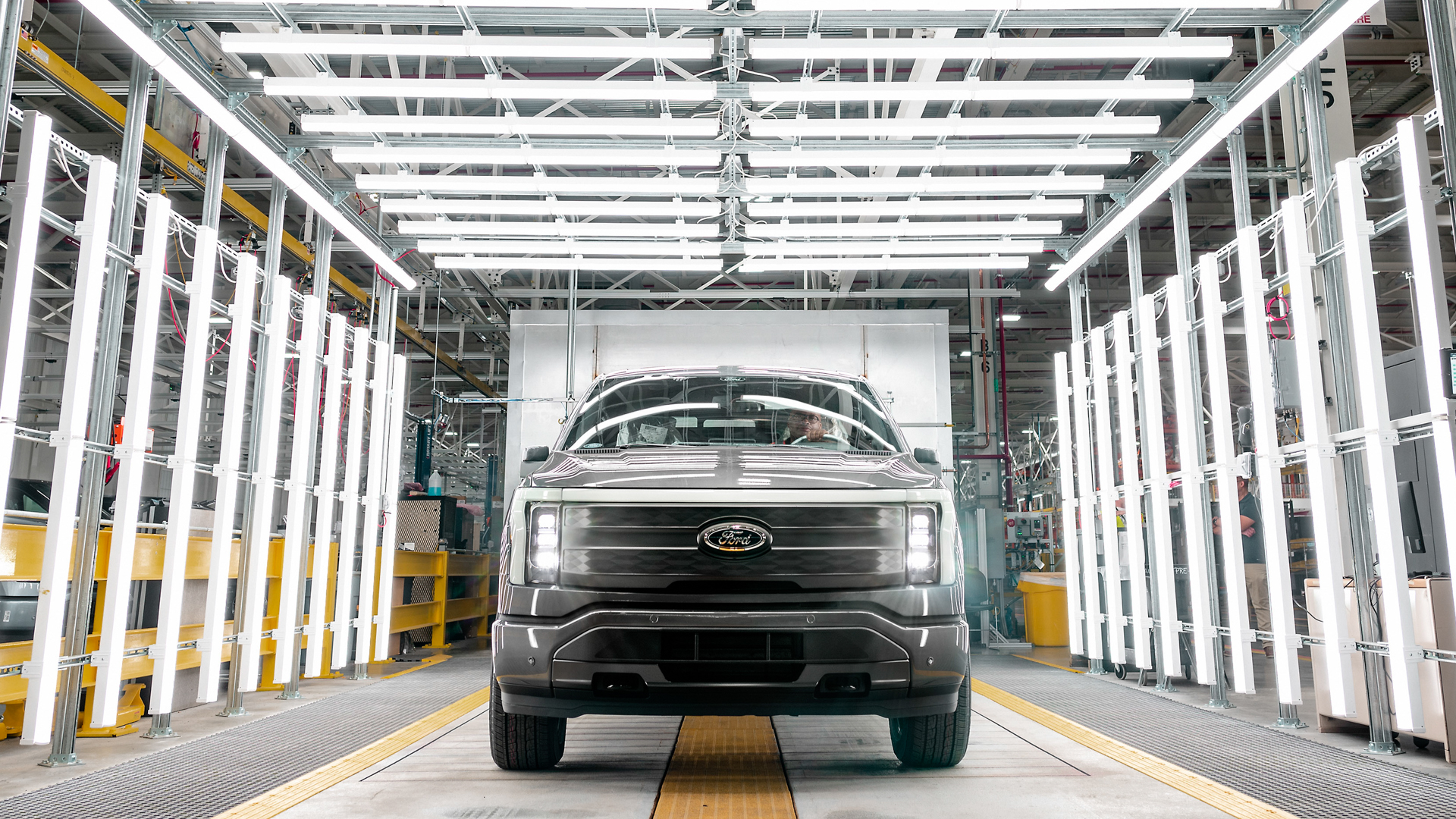

Ford’s new battery plant in Marshall, Michigan, will specialize in lower-cost batteries that use a different chemistry than batteries found in its Mach-E and F-150 Lightning EVs, the automaker announced Monday. The $3.5 billion facility that was announced Monday will produce lithium iron phosphate (LFP) batteries developed with Chinese battery giant CATL, although only Ford will employ and maintain the plant in Michigan. The new batteries will make their way into Ford’s EVs beginning as early as next year, although the plant won’t supply batteries for new cars until 2026.
The arm’s-length relationship between Ford and CATL is largely due to federal rules for battery-material sourcing specified in the Inflation Reduction Act, passed last year. Simply put: Ford has to go at it mostly alone to qualify its cars for federal tax incentives. And Ford says its plant will produce enough batteries for about 400,000 cars when it comes online.

There was initial concern about Ford’s involvement with CATL, considering the U.S. government’s slightly rocky relationship with the Chinese government. However, during a conference call ahead of the plant’s official announcement, Ford was adamant that its relationship with CATL was purely technical. Ford also said that there are clear stipulations in the contract between it and CATL, in case the Chinese government were to restrict outsourcing technologies to U.S. companies. It’s worth noting, though, that Ford isn’t the only U.S.-based brand that works with CATL, as Tesla also uses the Chinese brand as a battery supplier.
Ford’s new LFP battery technology will consist of prismatic battery cells that will be used in all current and future Ford EVs. Its goal is to sell 600,000 electric vehicles globally by the end of this year and a total of two million by the end of 2026.
“Ford’s $3.5 billion investment creating 2,500 good-paying jobs in Marshall building electric vehicle batteries will build on Michigan’s economic momentum,” Michigan Gov. Gretchen Whitmer said in a statement. “Today’s generational investment by an American icon will uplift local families, small businesses, and the entire community and help our state continue leading the future of mobility and electrification. Let’s continue bringing the supply chain of electric vehicles, chips, and batteries home while creating thousands of good-paying jobs and revitalizing every region of our state. … We’re on the move, so let’s keep our foot on the accelerator.”

According to Ford, LFP batteries require fewer critical minerals, such as nickel and cobalt, which reduces the environmental impact of their development. They’re also less expensive to make, which means they will help lower the cost of entry-level EVs moving forward.
By building LFP batteries in the U.S. rather than sourcing them from a different country, Ford says it would qualify for battery tax credits that federal regulators are expected to clarify in March. It also says that commercial vehicles and leased vehicles can qualify for federal tax credits, though the full $7,500 tax credit will depend on future mineral sourcing.
Ford will source LFP prismatic cells from CATL until this new plant is open, as it will soon offer such batteries in the Mustang Mach-E by the end of 2023 and the F-150 Lightning by the end of 2024. Future EVs, though will get their LFP batteries from the new Michigan plant starting in 2026.
Got tips? Send ’em to tips@thedrive.com